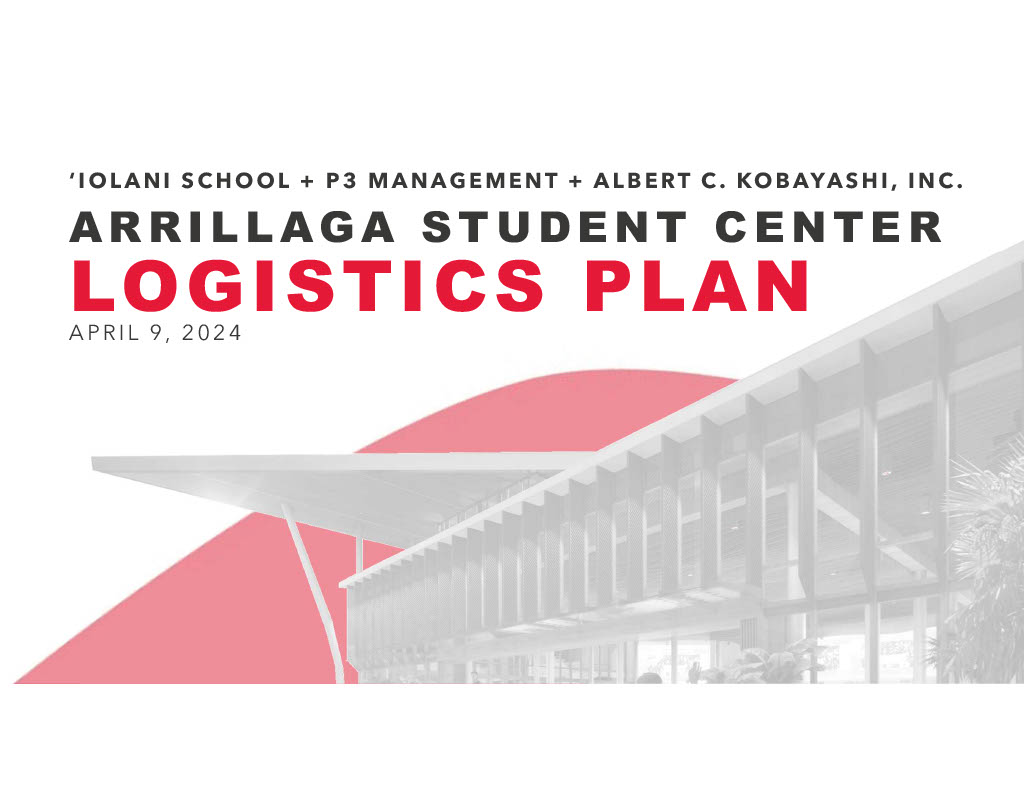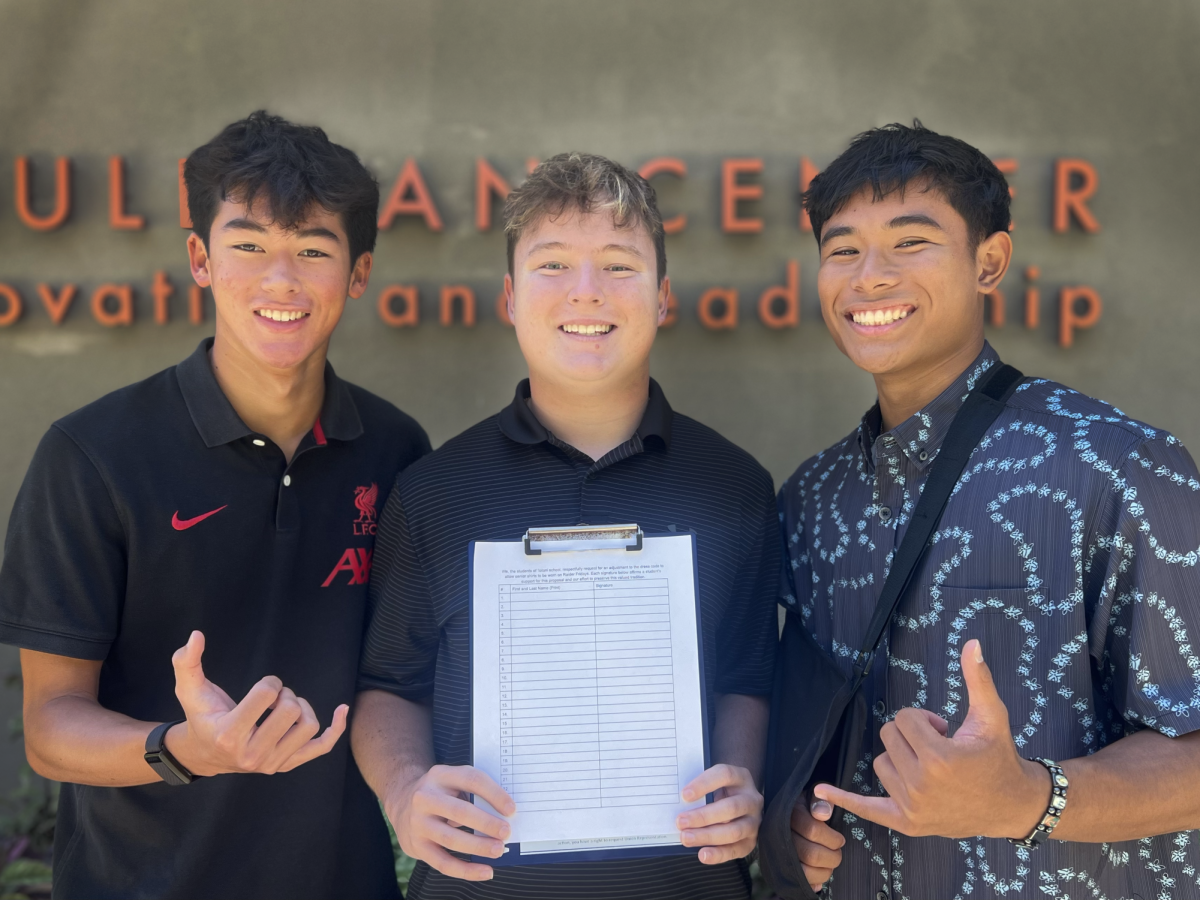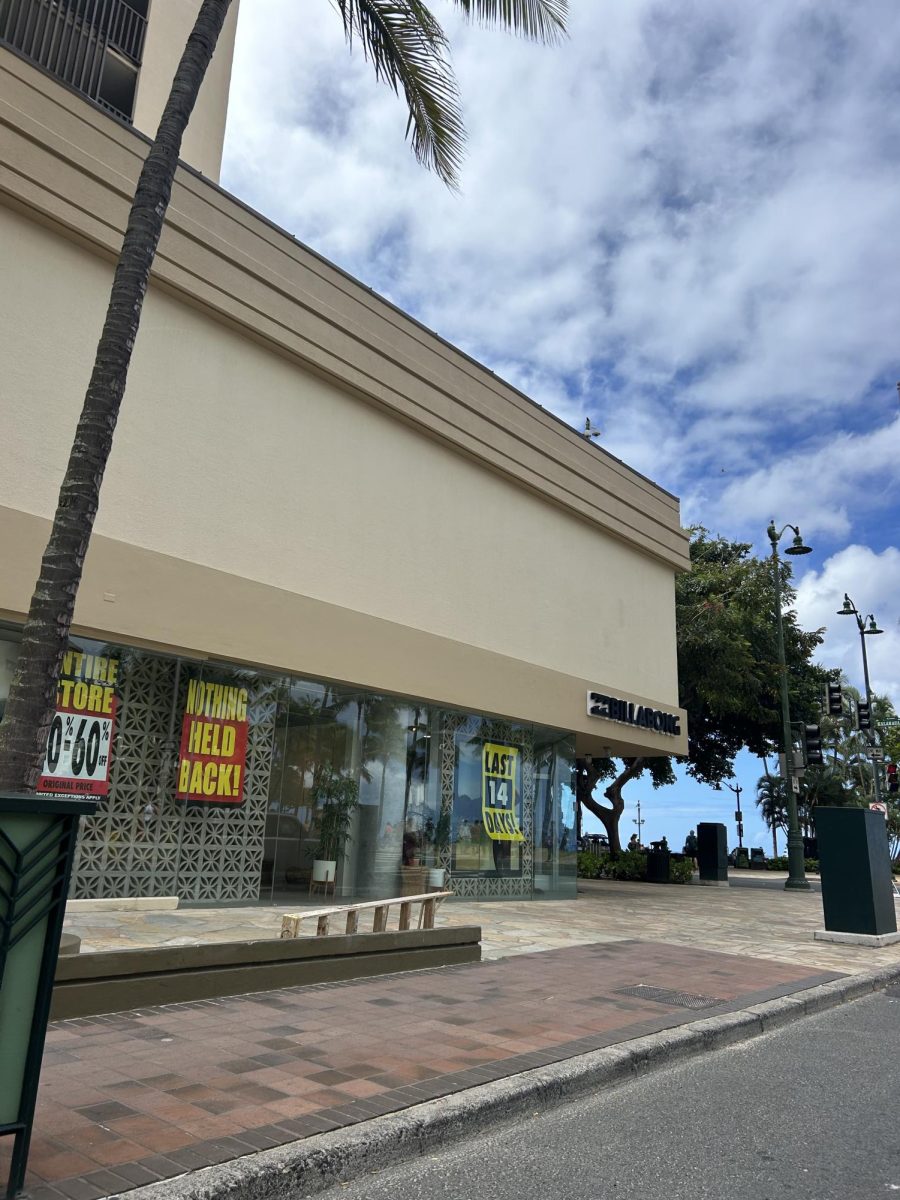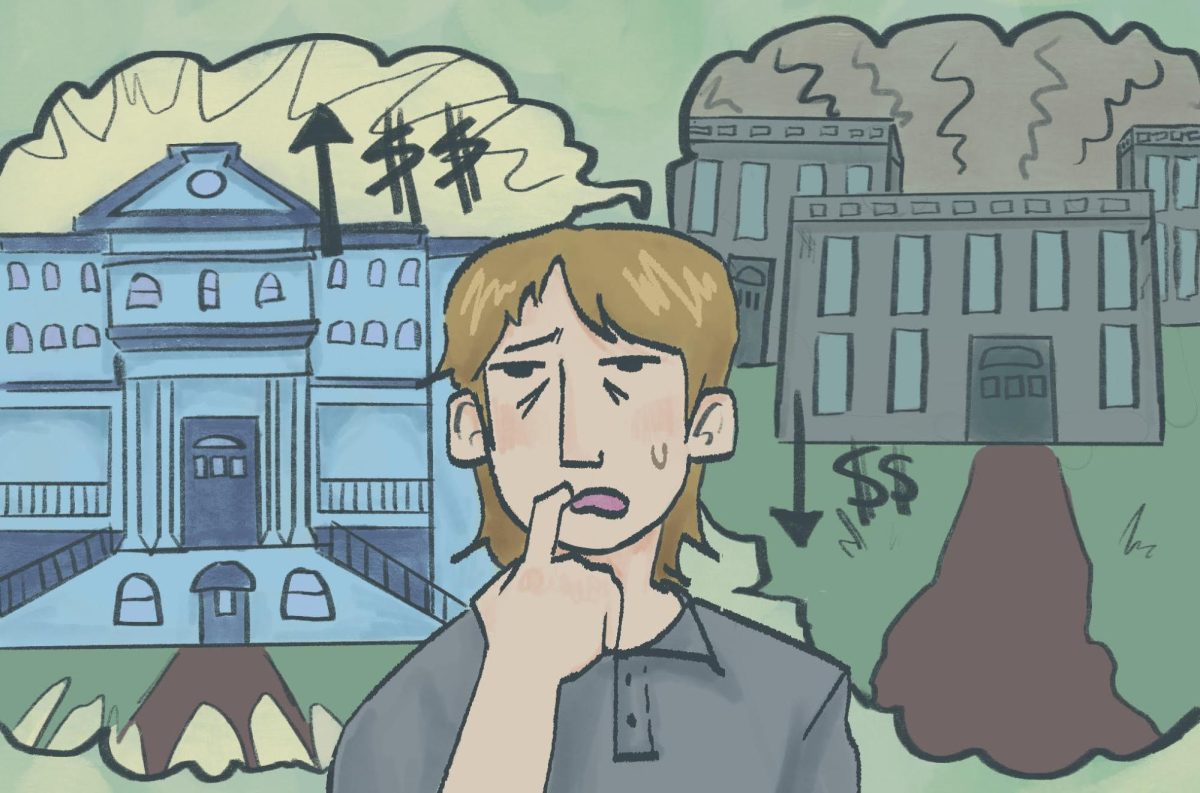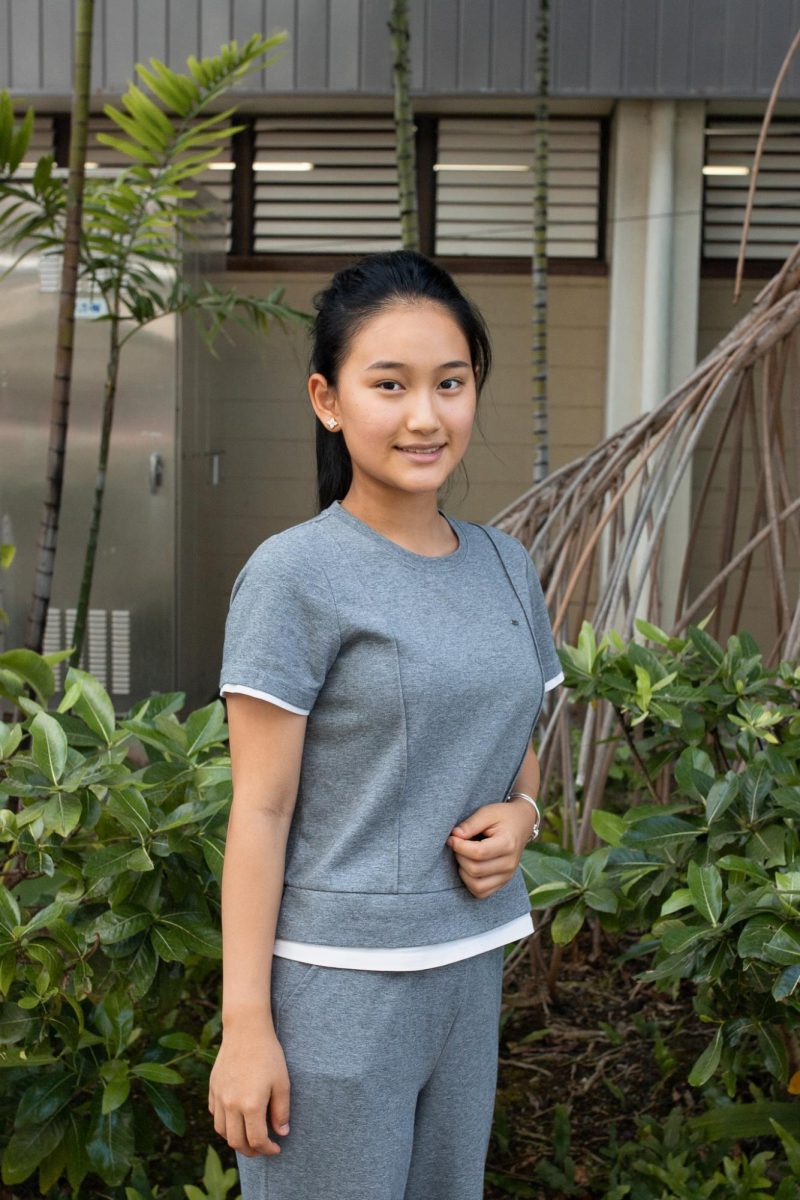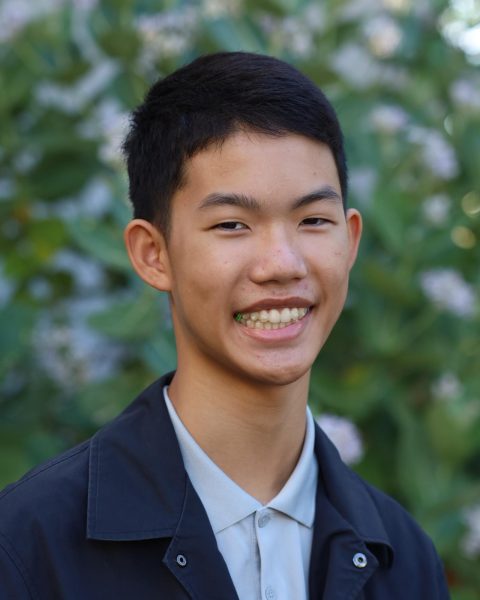The new Student Center has been the subject of excited buzz amongst faculty and students alike for its thrilling new additions to the campus, such as a new Wellness Center, new faculty lounge and even a new teahouse! The Arrillaga Center was named after the Arrillaga family due to their generous support of the project. The 18-month construction will begin this month and is expected to finish in the winter of 2025.
Whilst some eagerly anticipate the new addition to our campus, they may forget the many disturbances to occur during the making of the center. How will the environment at school change, you may ask? Construction barriers will obstruct walkways and may remove some of the chapel tent seating, athletic teams will need to be accommodated, food service will relocate, and noise disruptions may pose as a hurdle for the ‘Iolani community.
Phase one, beginning this month, will relocate the bleachers and remove the Ewa side chapel tents. The Student Center will be cleared in preparation for the following phase.
As you read this story, see the gallery of images depicting construction plans for each phase of the process.
Barrier Blues
The first disturbance will be the construction barriers, to be erected at the beginning of phase two in June of 2024. These barriers will outline where work on the Arrillaga Center will occur and protect students from debris generated by the construction.
Some barriers will be short-lived, such as those intruding into the Center Courtyard. Others will be longer lasting, staying for at least 17 months from June of 2024 to November of 2025, like the barriers up against the chapel which block the most common path to Lower School. The lasting barriers will be decorated with murals by students and will only be taken down once the new Arrillaga Center is complete.
“With the barriers, it’s going to be harder for me to get to classes,” lamented Kalena Shea ’28, “especially because I do orchestra so going back and forth from Weinberg to Castle is going to be a struggle.” The walkways in the area of the chapel tents and senior benches are going to be blocked off, so students like Kalena who wish to travel from Castle to Weinberg, or vice versa, will have to go through I-Building and past the swimming pool to get to class.
Before the barriers are erected, the chapel tents will be modified which will result in less seating. In the hopes of preserving some of the seating, Dr. Timothy Cottrell proposed, “What we’re looking at is: can we get a squarer tent than the long rectangle we have now?” The art building tents will also be removed to accommodate trailers to distribute food.
The Class of ’24 and Class of ’25 may worry about whether they will be able to graduate on the baseball field, but they should rest assured as the barriers will not pose a threat for this occasion. For both the Class of ’24 and Class of ’25, the barriers will be far back enough to allow for graduations.
Another concern is whether or not construction will affect traffic at Autoline. Dr. Cottrell reassured students, “On days when they’re going to bring a lot of trucks to the site to pour concrete or something like that, they’re going to start after pickup and after drop off is done.”
Athletic Accommodations
While all athletes who use the field–whether it be soccer, football or tennis–will be dismayed to know that the barriers will affect their practice by taking up a large section of the baseball field, baseball players in particular will be the most impacted by the construction.
Coach Wendell Look ’78 shared, “We’re gonna lose a bit towards the tennis course area and then a bit right behind shortstop and third base. So they’re gonna cut off some of it… so we won’t have a regulation field, but we’ll have all the way down to the makai side by the scoreboard.”
As such, baseball players should expect to practice in a different location, whether it be at Kaimuki, Radford, Ala Wai or elsewhere. However, Coach Look noted that the construction is not all too dissimilar from the interruption of ‘Iolani Fair, which happens every year “right in the heart of the baseball season.”
Despite the barriers being seen as a large hurdle and already causing concerns, other disturbances will follow as we advance through the phases of construction. As we start reaching phase three, which will likely begin in October of 2024, most people, specifically athletes, will be pleased to know that the barricade adjustments will allow more space for the baseball field. However, the following month in November, during phase four, the community can expect to start facing noise interferences.
On the construction plans for the Arrillaga Center, noise levels are measured on a scale from one to five. In November, when tower cranes are going to be brought onto campus, it is predicted that the noise disturbance, from a scale of one to five, will be at a four.
“[The crane] will be there and blow around in the wind,” Dr. Cottrell described.
“When I was a student here, in my senior year, Weinberg was built,” recalled Mr. Dana Tano ’03. “So, the construction was all around us. In the beginning it was rough. In about a week or two, you get used to it.”
Food Plans
As the current Student Center holds the kitchen, students may wonder about how and where they will receive their food. A plan for the school year has already been initiated, but there are some drawbacks.
Food trucks will be implemented as a substitute for the kitchen; however, they will be located by the Art Building. In order to make room, the Art Building tents are going to be removed, which equates to even less seating. Dorm students will also get their meals from the food trucks.
The food trailers are going to be our source of food for next year, but Dr. Cottrell mentioned how there is uncertainty about what is going to happen regarding the meals for this year’s summer school. “I think for this summer, we’re going to have to bring food to the campus,” Dr. Cottrell mentioned. As of April 12, 2024, no timeline for the summer program can be given because the plan for food is not entirely complete and is still in a thought process. Changes in dining are subject to change.
While construction will undoubtedly be an inconvenience, it will ultimately be a minor setback in exchange for a wonderful building.
Coach Look remains positive. “This place is really busy, a lot of things are happening, but you just roll with it and do the best that you can.”
Why Now?
The idea of renovating the Student Center has been in the works for almost a decade. It was next in line in a long string of projects involving the construction of the K1 community, the Sullivan Center and the Sidney and Minnie Kosasa Performance Studios. As much as the plan for Arrillaga Center was created to accommodate the rise in the number of students attending ‘Iolani, the addition of the teahouse, Wellness Center and unplugged space all tie into one theme, as Dr. Cottrell highlighted, “your long term health and wellness.”

